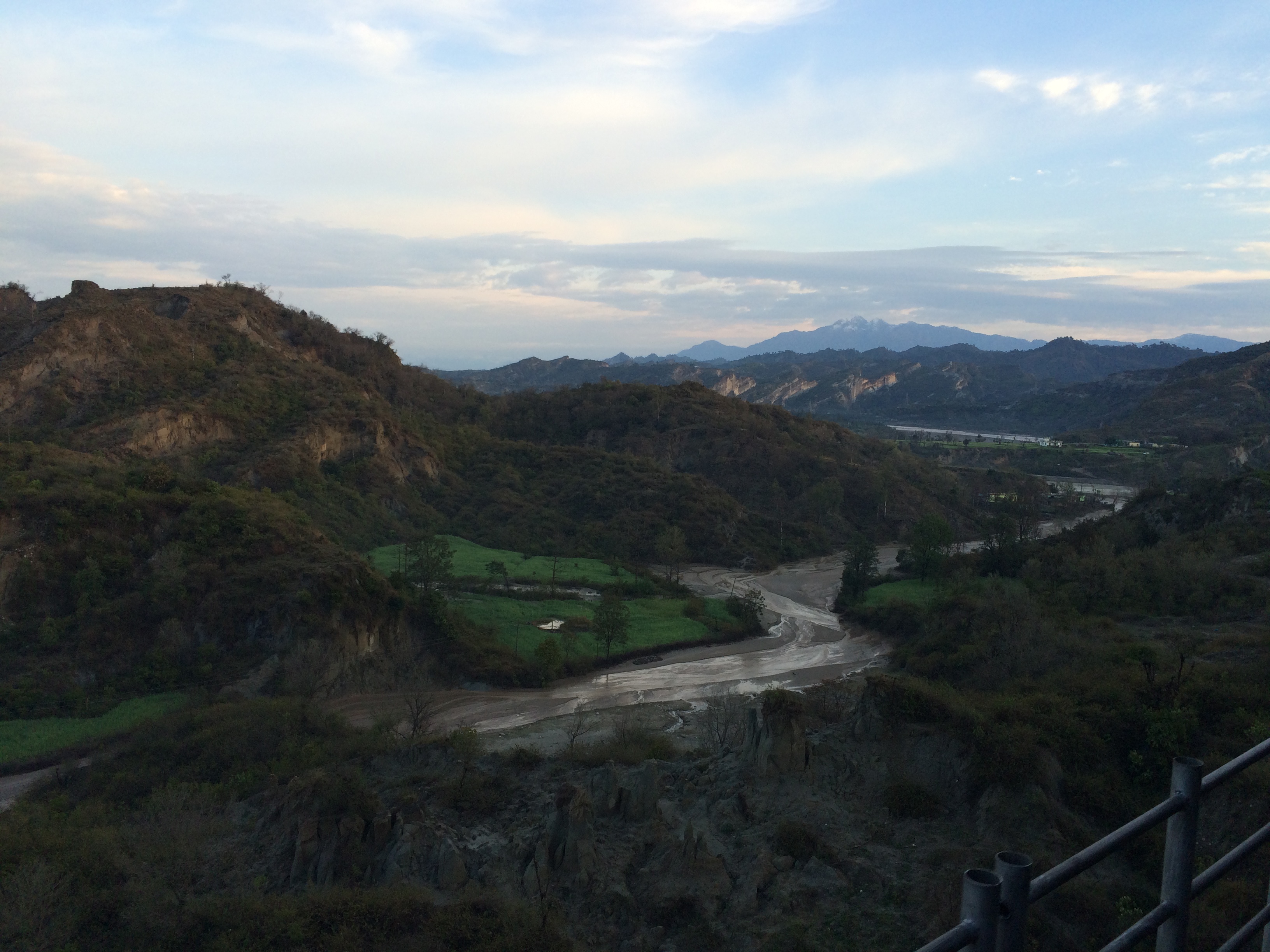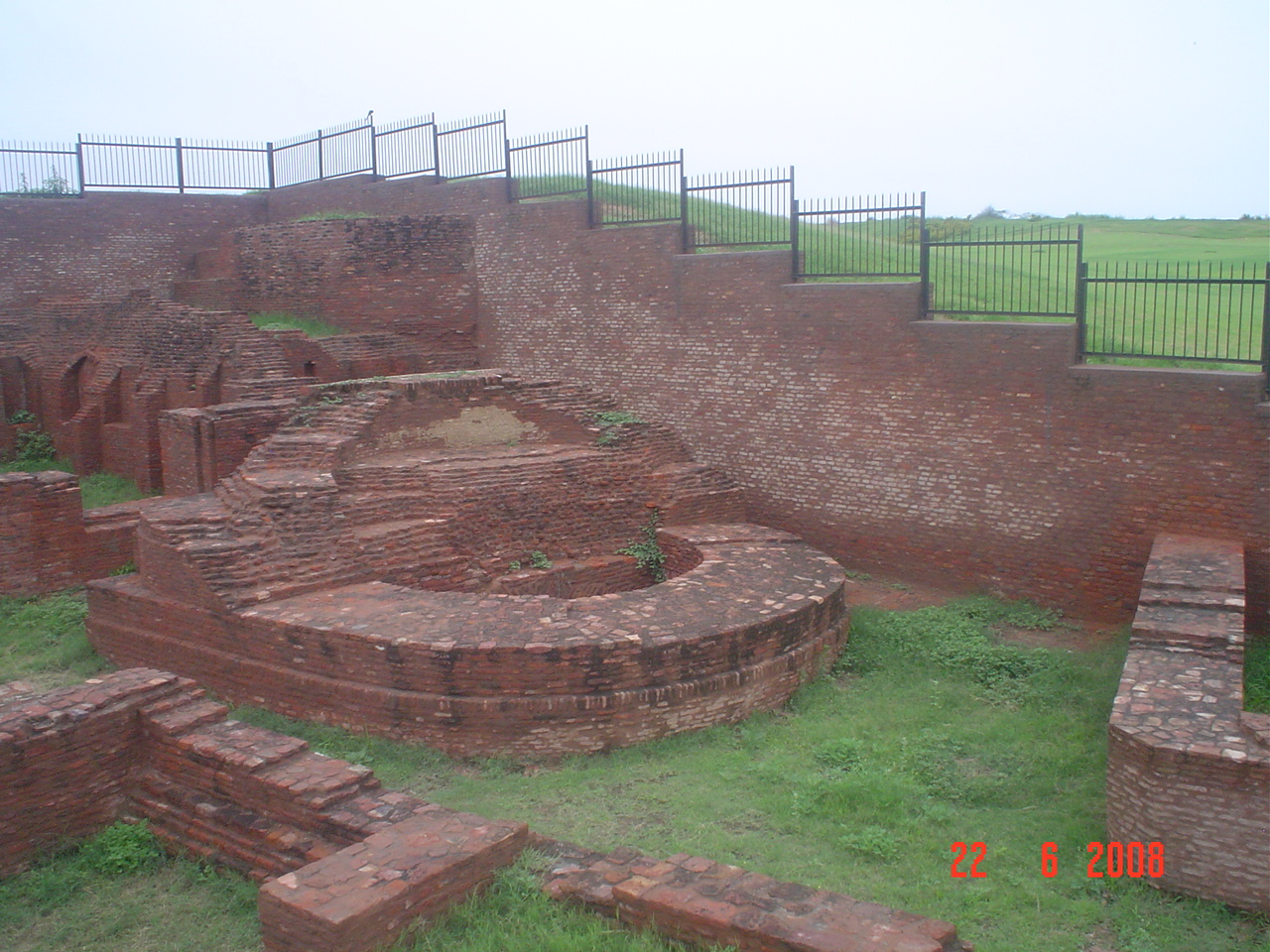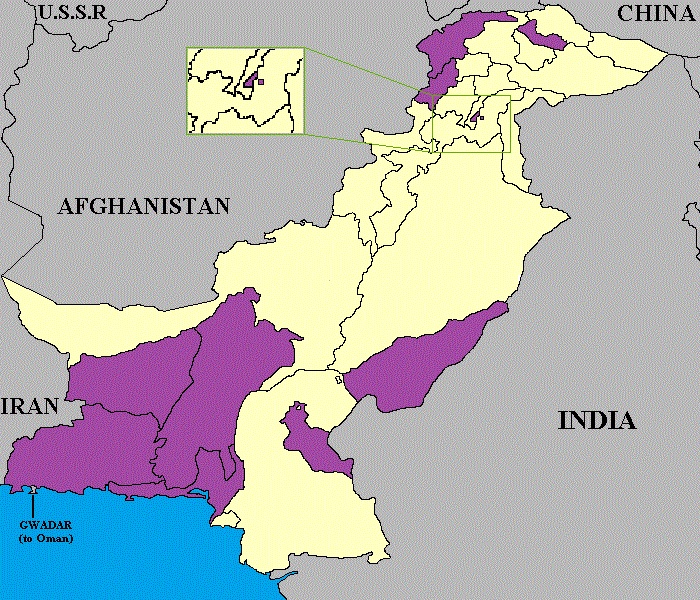|
Qila Sura Singh
Qila Sura Singh is a village in the Punjab province of Pakistan. It is located at 30°39'5N 73°44'25E with an altitude of 168 metres (554 feet). History During the Sikh Misl period, the village was under the administration of the Sukerchakia Misl. Before Partition of Punjab Qila Sura Singh was inhabited by Sikh Labanas who were mainly land owners, farmers, soldiers, and civil workers. Some of the villagers were recorded to have served in the 48th Pioneers during the First World War. After partition mostly all of the Sikh villagers migrated to the eastern half of Punjab, and what later became Haryana. Most of the refugees left before the major riots began in August, traveling through Jammu Jammu () is a city in Indian-administered Jammu and Kashmir (union territory), Jammu and Kashmir in the disputed Kashmir region.The application of the term "administered" to the various regions of Kashmir and a mention of the Kashmir dispute ... into Punjab. The inhabitants of Qila ... [...More Info...] [...Related Items...] OR: [Wikipedia] [Google] [Baidu] |
Country
A country is a distinct part of the world, such as a state, nation, or other political entity. When referring to a specific polity, the term "country" may refer to a sovereign state, state with limited recognition, constituent country, or dependent territory. Most sovereign states, but not all countries, are members of the United Nations. There is no universal agreement on the number of "countries" in the world, since several states have disputed sovereignty status or limited recognition, and a number of non-sovereign entities are commonly considered countries. The definition and usage of the word "country" are flexible and have changed over time. '' The Economist'' wrote in 2010 that "any attempt to find a clear definition of a country soon runs into a thicket of exceptions and anomalies." Areas much smaller than a political entity may be referred to as a "country", such as the West Country in England, "big sky country" (used in various contexts of the American We ... [...More Info...] [...Related Items...] OR: [Wikipedia] [Google] [Baidu] |
Sikh
Sikhs (singular Sikh: or ; , ) are an ethnoreligious group who adhere to Sikhism, a religion that originated in the late 15th century in the Punjab region of the Indian subcontinent, based on the revelation of Guru Nanak. The term ''Sikh'' has its origin in the Sanskrit word ', meaning 'seeker', or . According to Article I of Chapter 1 of the Sikh ''Rehat Maryada'' (), the definition of Sikh is: Any human being who faithfully believes in One Immortal Being Ten Gurus, from Guru Nanak Sahib to Guru Gobind Singh Sahib The Guru Granth Sahib The utterances and teachings of the ten Gurus and The initiation, known as the Amrit Sanchar, bequeathed by the tenth Guru and who does not owe allegiance to any other religion, is a Sikh. Male Sikhs generally have '' Singh'' () as their last name, though not all Singhs are necessarily Sikhs; likewise, female Sikhs have '' Kaur'' () as their last name. These unique last names were given by the Gurus to allow Sikhs to stand out ... [...More Info...] [...Related Items...] OR: [Wikipedia] [Google] [Baidu] |
Jammu
Jammu () is a city in Indian-administered Jammu and Kashmir (union territory), Jammu and Kashmir in the disputed Kashmir region.The application of the term "administered" to the various regions of Kashmir and a mention of the Kashmir dispute is supported by the WP:TERTIARY, tertiary sources (a) through (d), reflecting WP:DUE, due weight in the coverage. Although "controlled" and "held" are also applied neutrally to the names of the disputants or to the regions administered by them, as evidenced in sources (f) through (h) below, "held" is also considered politicised usage, as is the term "occupied," (see (i) below). (a) (subscription required) Quote: "Kashmir, region of the northwestern Indian subcontinent ... has been the subject of dispute between India and Pakistan since the partition of the Indian subcontinent in 1947. The northern and western portions are administered by Pakistan and comprise three areas: Azad Kashmir, Gilgit, and Baltistan, the last two being part of a ... [...More Info...] [...Related Items...] OR: [Wikipedia] [Google] [Baidu] |
Haryana
Haryana () is a States and union territories of India, state located in the northern part of India. It was carved out after the linguistic reorganisation of Punjab, India, Punjab on 1 November 1966. It is ranked 21st in terms of area, with less than 1.4% () of India's land area. The state capital is Chandigarh, which it shares with the neighbouring state of Punjab; the most populous city is Faridabad, a part of the National Capital Region (India), National Capital Region. The city of Gurgaon is among India's largest financial and technology hubs. Haryana has Divisions of Haryana, administrative divisions, List of districts of Haryana, districts, 72 sub-divisions, 93 tehsil, revenue tehsils, 50 sub-tehsils, 140 Community development block in India, community development blocks, 154 List of cities in Haryana by population, cities and towns, 7,356 villages, and 6,222 Gram panchayat, villages panchayats. Haryana contains 32 special economic zones (SEZs), mainly located within the ... [...More Info...] [...Related Items...] OR: [Wikipedia] [Google] [Baidu] |
East Punjab
East Punjab was a state of Dominion of India from 1947 until 1950. It consisted parts of the Punjab Province of British India that remained in India following the partition of the state between the new dominions of Pakistan and India by the Radcliffe Commission in 1947. The mostly Muslim western parts of the old Punjab became Pakistan's West Punjab, later, renamed as Punjab Province, while the mostly Hindu and Sikh eastern parts remained with India. History Partition of India With the partition of India, the Punjab province was to be divided in two as per the Indian Independence Act 1947, passed by the parliament of the United Kingdom. The province was to cease to exist, and two new provinces were to be constituted, to be known respectively as West Punjab & East Punjab. All the princely states of the Punjab States Agency, except Bahawalpur, which acceded to the Dominion of Pakistan, acceded to the new Union of India and were combined into the Patiala and East Punjab St ... [...More Info...] [...Related Items...] OR: [Wikipedia] [Google] [Baidu] |
First World War
World War I or the First World War (28 July 1914 – 11 November 1918), also known as the Great War, was a World war, global conflict between two coalitions: the Allies of World War I, Allies (or Entente) and the Central Powers. Fighting took place mainly in European theatre of World War I, Europe and the Middle Eastern theatre of World War I, Middle East, as well as in parts of African theatre of World War I, Africa and the Asian and Pacific theatre of World War I, Asia-Pacific, and in Europe was characterised by trench warfare; the widespread use of Artillery of World War I, artillery, machine guns, and Chemical weapons in World War I, chemical weapons (gas); and the introductions of Tanks in World War I, tanks and Aviation in World War I, aircraft. World War I was one of the List of wars by death toll, deadliest conflicts in history, resulting in an estimated World War I casualties, 10 million military dead and more than 20 million wounded, plus some 10 million civilian de ... [...More Info...] [...Related Items...] OR: [Wikipedia] [Google] [Baidu] |
48th Pioneers
The 48th Pioneers were an infantry regiment of the British Indian Army. They could trace their origins to 1901, when they were raised as the 48th (Pioneers) Bengal Infantry. They were the last raised Bengal Infantry unit before the reorganization of the Indian Army in 1903. Compared to various other regiments, the 48th Pioneers were religiously diverse. During World War I the regiment was part of 6th (Poona) Division and was captured in its entirety at the Siege of Kut, on 29 April 1916. A 2/48th Pioneers was reformed in Mesopotamia in May 1916, renumbered 48th Pioneers in June, and attached to 15th Indian Division. After World War I the Indian government reformed the army moving from single battalion regiments to multi battalion regiments. In 1921, the 48th Pioneers now became the 4th Battalion, 2nd Bombay Pioneers The 2nd Bombay Pioneers was a regiment of the British Indian Army. The regiment was formed in 1922, when the infantry of the Indian Army moved from single battalion t ... [...More Info...] [...Related Items...] OR: [Wikipedia] [Google] [Baidu] |
Labana
Labana (also spelled Lubana, Lavana, Lubhana; ) is a merchant and transportation community in India engaged in maritime trade and land trade, which includes trading and transportation of goods such as saltpetre, silk, diamonds, etc. In the Punjab region, during socio-economic reforms, Labanas overwhelmingly became agriculturists. The Labanas of Punjab and Haryana are mostly Sikhs and Hindus and mainly speak Punjabi or Hindi. Etymology The term "Lubana" is believed to be a combination of two words - "lūn," meaning "salt," and "bānā," meaning "trade." The Lubanas, as a community, were deeply involved in the transportation and trading of salt. They were also occasionally referred to as Banjaras. History The history of the Lavana/Labana community traces back to their association with the salt trade and transportation, which influenced their name and occupation. The term 'Lubana' is believed to have derived from the Sanskrit word 'Lavan,' meaning salt. This connection is evide ... [...More Info...] [...Related Items...] OR: [Wikipedia] [Google] [Baidu] |
Partition Of India
The partition of India in 1947 was the division of British India into two independent dominion states, the Dominion of India, Union of India and Dominion of Pakistan. The Union of India is today the Republic of India, and the Dominion of Pakistan is the Islamic Republic of Pakistan and the People's Republic of Bangladesh. The Partition (politics), partition involved the division of two provinces, Bengal and the Punjab Province (British India), Punjab, based on district-wise Hindu or Muslim majorities. It also involved the division of the British Indian Army, the Royal Indian Navy, the Indian Civil Service, the History of rail transport in India, railways, and the central treasury, between the two new dominions. The partition was set forth in the Indian Independence Act 1947 and resulted in the dissolution of the British Raj, or Crown rule in India. The two self-governing countries of India and Pakistan legally came into existence at midnight on 14–15 August 1947. The partiti ... [...More Info...] [...Related Items...] OR: [Wikipedia] [Google] [Baidu] |
Subdivisions Of Pakistan
The administrative units of Pakistan comprise four provinces, one federal territory, and two territorial dispute, disputed territories: the provinces of Punjab, Pakistan, Punjab, Sindh, Khyber Pakhtunkhwa, and Balochistan, Pakistan, Balochistan; the Islamabad Capital Territory; and the administrative territories of Azad Kashmir, Azad Jammu and Kashmir and Gilgit-Baltistan, Gilgit–Baltistan. As part of the Kashmir conflict with neighbouring India, Pakistan has also claimed sovereignty over the Indian-controlled territories of Jammu and Kashmir (union territory), Jammu and Kashmir and Ladakh since the Indo-Pakistani War of 1947–1948, First Kashmir War of 1947–1948. It also has a territorial dispute with India over Junagadh State, Junagadh, but has never exercised administrative authority over either regions. All of Pakistan's provinces and territories are subdivided into divisions of Pakistan, divisions, which are further subdivided into districts of Pakistan, districts, ... [...More Info...] [...Related Items...] OR: [Wikipedia] [Google] [Baidu] |
Sukerchakia
The Sukerchakia Misl was one of twelve Sikh misls in Punjab during the 18th century, concentrated in Gujranwala and Hafizabad districts in western Punjab (in modern-Pakistan) and ruled from (1752–1801). The misl, or grouping with its own guerilla militia (jatha), was founded by Charat Singh of Sandhawalia, grandfather of Maharaja Ranjit Singh. The last Sukerchakia Misldar (commander of the Misl) was Maharaja Ranjit Singh. Towards the end of the eighteenth century, Maharaja Ranjit Singh united all the misls and established an independent Sikh Empire. History Family origin The earliest traceable ancestor of the Sukerchakia family with reliable historicity was Kalu (died c.1488), a Jat of the Warraich '' got'' (clan), who moved in c.1470 from his native village of Bhatian (in modern-day Lahore district) to Sansara (or Sansi; located in modern-day Ajnala ''tehsil'', Amritsar district, Punjab, India) with his spouse. Later-on, he would further shift his family to Sand, ... [...More Info...] [...Related Items...] OR: [Wikipedia] [Google] [Baidu] |
Misl , known as the National Indoor Soccer League in 2008 and adopted the MISL name in 2009
{{disambig ...
Major Indoor Soccer League has been the name of three different American professional indoor soccer leagues: *Major Indoor Soccer League (1978–1992), known in its final two seasons as the Major Soccer League *Major Indoor Soccer League (2001–2008), founded by former NPSL teams and later joined by WISL teams *Major Indoor Soccer League (2008–2014) The Major Indoor Soccer League (MISL), originally known as the National Indoor Soccer League, was a professional indoor soccer league which began play in 2008. It was the third league to be known as the Major Indoor Soccer League after the Majo ... [...More Info...] [...Related Items...] OR: [Wikipedia] [Google] [Baidu] |




